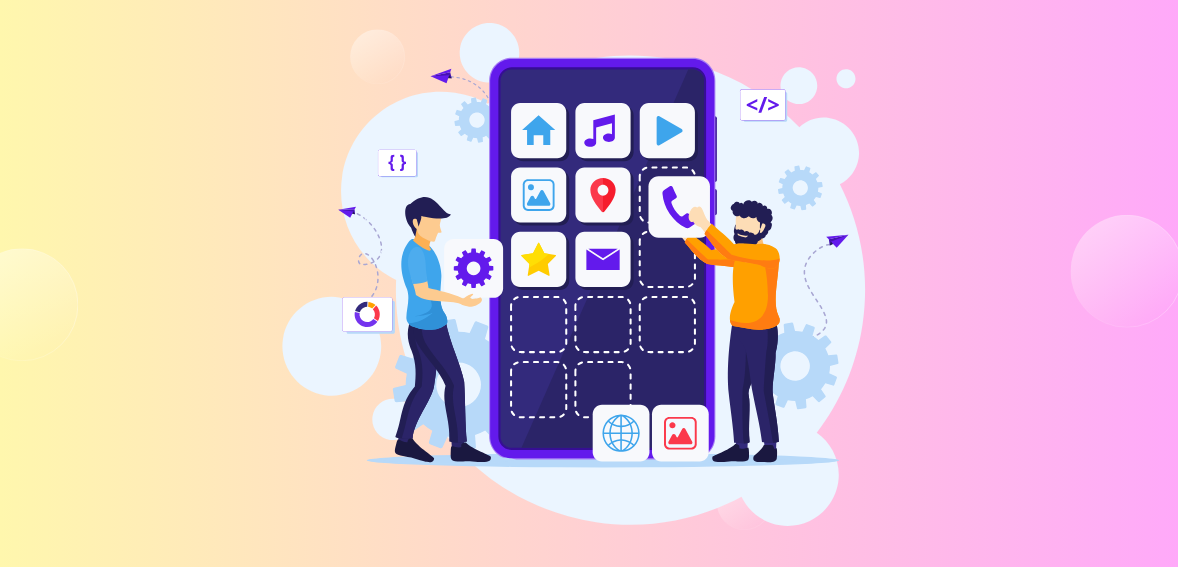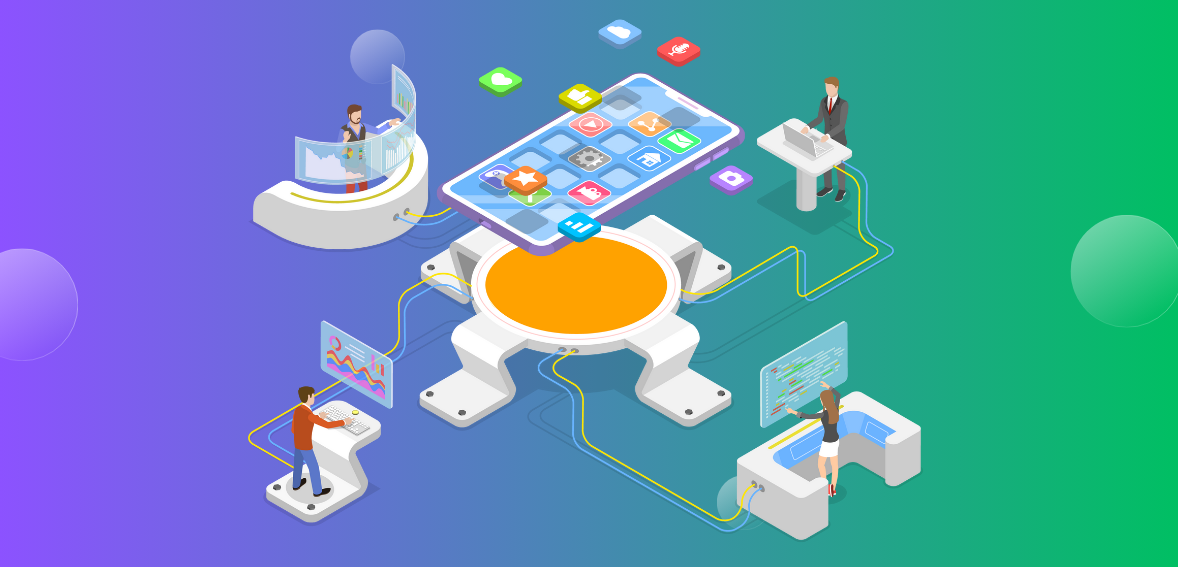Introduction
nnnnFull-stack development is one of the hottest trends in the tech industry. It’s an approach to software development that involves using both front-end and back-end code, as opposed to only one or the other. In other words: if you’re not using full-stack development yet but want to learn about it, this article will help! Full stack development includes many different areas and topics: artificial intelligence (AI), IoT—which stands for Internet of Things—and blockchain are just three examples.
nnnnArtificial Intelligence
nnnnArtificial Intelligence (AI) is already being used in many industries. AI can be used to improve customer experience by learning from past purchases, analyzing social media posts, and taking action on behalf of the user. It can also automate repetitive tasks like booking travel arrangements or managing your credit card bill online.
nnnnAI has many potential applications in the future including:
nnnn- n
- Creating new products and services nnnn
- Improving the efficiency of operations by automating them through machine learning algorithms that learn from data collected over time with no human intervention needed; allows organizations to reduce costs while improving productivity at an exponential rate! For example, if there were 100 employees who worked 8 hours per day instead of 6 then each employee would only have ~4 hours worth working every day instead of ~20 hours worth working every week! This means savings across all departments including HR departments which typically deal with half their time spent dealing with employee grievances rather than actually doing their job properly.” n
AI is capable of performing many tasks that humans are not. It can process vast amounts of data and make decisions based on what it learns from these data sets. For example, if there were 100 employees who worked 8 hours per day instead of 6 then each employee would only have ~4 hours worth working every day instead of ~20 hours worth working every week! This means savings across all departments including HR departments which typically deal with half their time spent dealing with employee grievances rather than actually doing their job properly.”
nnnnIoT
nnnnIoT is a network of physical devices, vehicles, home appliances, and other items embedded with electronics, software, sensors, actuators, and connectivity which enables these objects to connect and exchange data.
nnnnAR adds digital elements to a live view often by using the camera on a smartphone. AR is developed into apps and used on mobile devices to blend digital components into the real world in such a way that they enhance one another but can also be told apart easily.
nnnnVR implies a complete immersion experience where users feel as if they were actually present in another place or time period (e.g., through virtual reality goggles). Video games are an example of this type of technology because it allows users to access new worlds without leaving their homes or going outside too much (which may be dangerous). This has led many people interested in learning more about how this kind of technology works so they can use it themselves one day!
nnnnVR is a three-dimensional, computer-generated environment that can be explored and interacted with by a person. While wearing a headset, users can look around the world, move through it and interact with objects or other avatars (virtual representations of people). In contrast to VR, AR superimposes computer-generated imagery over a live view of the real world.
nnnnBlockchain
nnnnBlockchain is a technology that allows for peer-to-peer transactions without the need for a third party. It’s also a distributed ledger, which means it is immutable and decentralized. This means that blockchain can be transparent, resilient, secure, and auditable—all qualities that make it ideal for use in full-stack development projects.
nnnnBlockchain also has fast transaction times because of its distributed nature; this makes it better suited for real-world applications than traditional databases or cloud storage services (which don’t offer much speed).
nnnnBlockchain can be used to develop applications that have a variety of uses, including – Payment processing – Supply chain management – Identity management
nnnn– Smart contracts – And many more! Blockchain has a lot of potential uses, and it’s likely that this technology will become more popular as time goes on. However, most blockchain developers have limited experience with the technology because it is still relatively new. They may not know how to create a dApp from scratch or how to build their own blockchain application from scratch.
nnnnAR/VR
nnnnAR/VR is a combination of Augmented Reality and Virtual Reality. It’s used for training, education, gaming, and entertainment.
nnnnAR/VR is one of the biggest trends in 2018. Companies like Apple have recently announced plans to launch their own AR headset called Project Mojito that will allow users to see their favorite apps on top of virtual objects like people and animals.
nnnnVirtual reality (VR) headsets are also becoming more affordable so consumers can enjoy immersive experiences without spending too much money on them.
nnnnGoogle also announced a new ARCore software development kit (SDK) that will allow developers to create AR apps for Android devices. The company has also partnered with the game engine Unity to bring its tools and services to developers, who can now build immersive games using Google’s kits.
nnnnCompanies like Facebook, Google, and Microsoft are also launching their own AR/VR headsets in order to compete with Apple. These companies believe that AR/VR will be the future of computing, but there are still some challenges that need to be addressed before it becomes mainstream.
nnnnProgramming Language Trends
nnnnProgramming language trends are a bit different than other programming trends. Here’s a look at some of the most popular languages used in full-stack development, according to Stack Overflow’s most recent developer survey:
nnnnJavaScript is by far the most popular language used on full-stack projects. It’s followed by Python, then R, and then Java. C++ rounds out the top 5 languages (and is actually more popular than Scala).
nnnnC is still very much alive as an option for developers but it remains overshadowed by other more modern languages such as C++ and Rust when it comes time to choose which one will make your app run smoothly!
nnnnWhen it comes to full-stack development, there are many different ways to approach the problem. Some developers will specialize in front-end development while others focus on back-end development. Still, others will choose a hybrid approach that mixes and matches both types of coding.
nnnnLow Code Development
nnnnLow code development is a new way of building software that is more flexible, scalable, and faster. It’s a method for developing applications that don’t require developers to write any code at all. Instead, they use low-code platforms like Wix and CodeIgniter to build their website or app.
nnnnLow code development has grown in popularity because it allows businesses to save money by outsourcing their web design and development work—and also because it allows them to build websites without having an expert developer on staff who knows how things work behind the scenes.
nnnnLow-code development tools are designed to help business owners and non-technical employees easily create, manage and maintain websites or mobile applications. This can be especially helpful for businesses that don’t have a dedicated IT department or in cases where the site needs to be updated frequently.
nnnnIT outsourcing
nnnnIt’s no secret that the cost of technology has increased over time. The same holds true for the amount of time it takes to develop new software or hardware solutions. This can be a major problem for many businesses, especially those who want to create their own products and services.
nnnnThe solution: outsourcing your IT needs! Outsourcing has become an increasingly popular business strategy for companies looking to save money while maintaining control over their operations. It allows them to focus on what they do best—building great products or services—while outsourced partners handle all other aspects of running a business from payroll management through security measures like encryption keys and firewalls so you don’t have any surprises when things go wrong (which will happen eventually).
nnnnThere are several reasons why companies choose this option:
nnnn– It frees up cash flow. – Outsourcing providers are experts and can handle your workload more efficiently than internal staff. – You control the process and can easily make changes when needed without disrupting any internal systems or processes.
nnnn– Outsourcing can help companies avoid the high costs of hiring new employees and training them. – You can spread your overhead costs over many projects rather than having to pay for all of them with one project.
nnnnThe top 7 development trends are AI, IoT, blockchain, AR/VR, programming languages, low code development, and outsourcing
nnnnThe top 7 development trends are AI, IoT, blockchain, AR/VR, programming languages, and low code development.
nnnnAI: Artificial Intelligence (AI) is the science of making machines behave like humans and learning from data to make better decisions. It’s becoming more popular because it can be used in many industries including healthcare and finance.
nnnnIoT: The Internet of Things (IoT) refers to connecting smart devices that can collect data from their surroundings via sensors or chips but do not have any human-like processing capabilities. For example, an IoT device may be able to monitor temperature levels in your house or detect when someone has opened a door using its motion sensor system so you know who has entered without having anyone call their parents!
nnnnConclusion
nnnnThe top 7 development trends are AI, IoT, blockchain, AR/VR, programming languages, low code development, and IT outsourcing. These are the key areas that you should focus on if you want to stay ahead of the curve in 2019.
n



